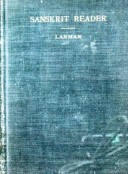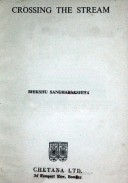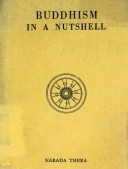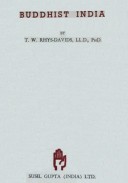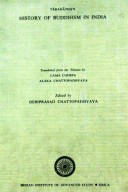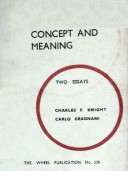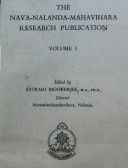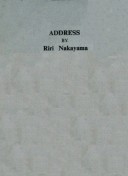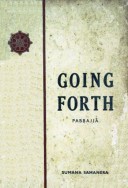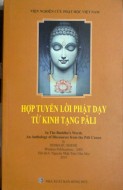Tìm Sách
Sách tiếng Anh-English >> Anagarika Dharmapala
Thông tin tra cứu
- Tên sách : Anagarika Dharmapala
- Tác giả : Bhikshu Sangharakshita
- Dịch giả :
- Ngôn ngữ : Anh
- Số trang : 98
- Nhà xuất bản : BUDDHIST PUBLICA Kandy
- Năm xuất bản : 1964
- Phân loại : Sách tiếng Anh-English
- MCB : 12100000002552
- OPAC :
- Tóm tắt :
ANAGARIKA DHARMAPALA
A Biographical Sketch
by Bhikshu Sangharakshita
BUDDHIST PUBLICA Kandy 1964
1952, In “Maha Bodhi Society, Diamond Jubilee Souvenir’’
Second Edition: 1956, Maha Bodhi Society, Calcutta
Third Edition: 1964, Buddhist Publication Society,
Kandy.
The Wheel Publication No. 70/71/72
First Edition:
ANAGARIKA DHARMAPALA
T HE prospects of Ceylon Buddhism in the 'sixties of the last century were dark indeed. Successive
waves of Portuguese, Dutch and British invasion had swept away much of the traditional culture of the country. Missionaries had descended upon the copper- | colouredIsland like a cloud of locusts; Christian
schools of every conceivable denomination had been opened, where Buddhist boys and girls were crammed with bible texts and taught to be ashamed of their religion, their culture, their language, their race and their colour. The attitude of the missionaries is expressed with unabashed directness in one of the verses of a famous hymn by the well known Anglican Bishop Heber, a hymn which is still sung, though with less conviction
than in the days when it first made its appearance, in churches all over England :
What though thejipicy breezes Blow soft o’er Ceylon’s isle,
Where every prospect pleases,
And only man is vile;
In vain with lavish kindness The gifts of God are strowwn,
The heathen in his blindness Bows down to wood and stone.
Throughout the territories under Dutch occupation dhists had been compelled to declare themselves as
I Budiposition high even as their present one was low.
Beginnings of a great Sinhalese Patriot
Among the few well-to-do families which through all vicissitudes stood firmly and fearlessly on the side of their ancestral faith was the Hewavitarne family of Matara in South Ceylon. Hewavitarne Dingiri Appuhamy, the first member of this family with whom we are concerned, belonged to the large and respected goigama or cultivator class. He had two sons, both of whom exhibited the same devotion to the Dharma as their father. One of them became a bhikshu known as Hittatiye Atthadassi Thera and occupied the incumbency of Hittatiya Raja Mahavihara. His teacher, Mirisse Revata Thera, was fourth in pupillary succession from the Sangharaja Saranankara, the greatest name in eighteenth century Ceylon Buddhism. The other son, Don Carol is Hewavitarne, migrated to Colombo, established there a furniture manufacturing business in the Pettah area, and married the daughter of a Colombo businessman, Andris Perera Dharmagunawardene, who had donated a piece of land at Maligakanda, erected on it the first Pirivena or Buddhist monastic college in Ceylon, and brought a monk from the remote village of Hikkaduwa to be its principal. Since then the names of the Vidyodaya Pirivena and Hikkaduwa Siri Sumangala Maha Nayaka Thera have passed, inseparably united, into the history of world Buddhism. Through the halls of this great institution of Buddhist learning, unrivalled throughout the length and breadth of Ceylon, have passed monks from Burma, Siam, India, Japan and China, and the memory of the great Buddhist scholar, mathematician and expert in comparative religion who
Christians, and during the period of British rule this law was enforced for seventy years, being abrogated only in 1884, when on behalf of the Buddhists of Ceylon Col. Olcott made representations too the Secretary of State for the Colonies in London. Children born of Buddhist parents had to be taken for registration to a church, where some biblical name would be bestowed on them, with the result that most Sinhalese bore either an English Christian name and a Portuguese surname, if they were Catholic ‘converts’, or an English Christian name and a Sinhalese surname, if they were Anglicans. The majority of them were ashamed or afraid to declare themselves Buddhists, and only in the villages of the interior did the Dharma of the Blessed One retain some vestige of its former power and popularity, though even here it was not free from the attacks of the thousands of catechists who, for twenty rupees a month, were prepared to go about slandering and insulting the religion of their fathers. Members of the Sangha, with a few noble exceptions, were intellectually and spiritually moribund; monastic discipline was lax, the practice of meditation had been neglected and then forgotten ; and even to those who truly loved the Buddha, the Dharma and the Sangha, it must sometimes have seemed that, after reigning for more than twenty glorious centuries over the hearts and minds of the Sinhala race, they were doomed to be “cast as rubbish to the void”, and swept into the blue waters of the Arabian Sea by the triumphant legions of militant Christianity. But this was not to be. Low though the fortunes of the Dharma had sunk the great beam of the national karma was beginning to right itself, and gigantic forces were being set in motion vhich in the future would lift them to a 4 for so many decades guided its destinies is revered | wherever the Dharma taught in the Pali Scriptures is known.
Both Don Carolis and his young wife Mállika ardently desired a son, and when they knew that a child would be born to them their joy was great indeed. But although they both desired a son the reasons for which they desired him were by no means the same. Mudaliyar Hewavitarne thought of a successor in the family business, while his wife dreamed of a bhikshu who would guide the erring footsteps of the Sinhala people back to the Noble Eightfold Path from which they had so long been led astray. Every morning before sunrise the young bride, who was not yet out of her ‘teens, would gather a trayful of sweet-smelling five-petalled temple flowers and offer them, together with coconut-oil lamps and incense, at the feet of the Buddha-image *in the family shrine, praying to the devas that she might bear a son who would rekindle the lamp of the Dharma in a darkened land. Every evening, too, she would lie prostrate in supplication before the silent image, which was a wooden replica of one of the great stone Buddhas of Anuradhapura, the ancient city whose very name awakes in every Sinhala heart an unutterably deep nostalgia for the temporal and spiritual glories of long ago. Who knows what subtle spiritual emanations from the liberated minds of old passed through that image and penetrated the receptive mind of the Sinhala maiden, steeping the lotus of her aspiration in the dews of kindliness and peace, and purifying her heart and mind until they were a fit receptacle for the Great Being who was to accomplish
 Facebook
Facebook
 Google
Google
 Google+
Google+
